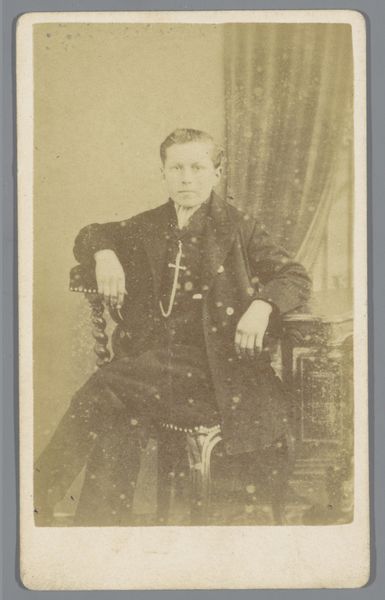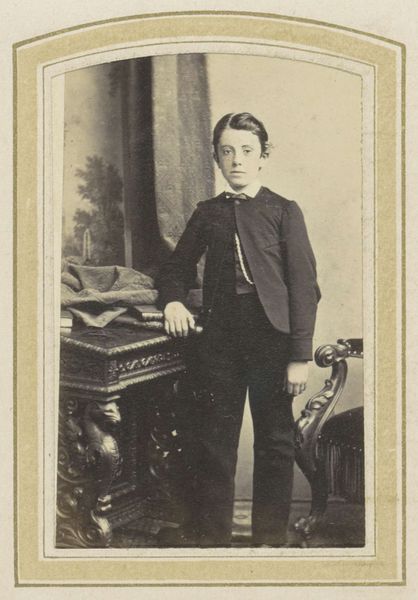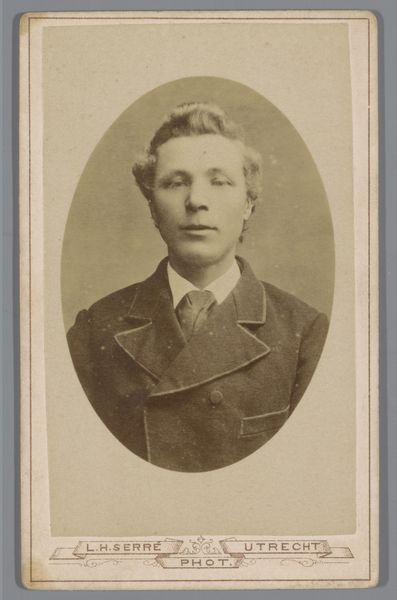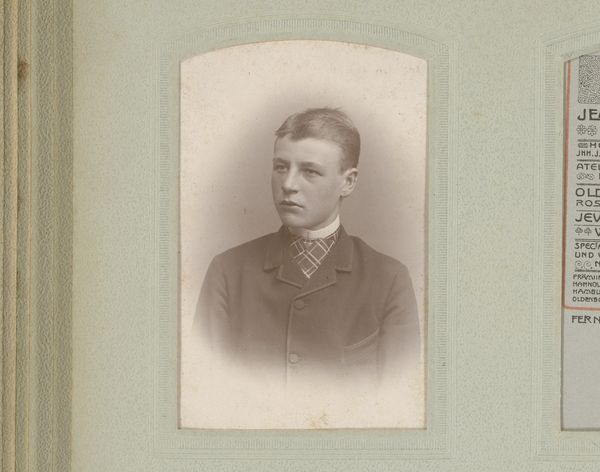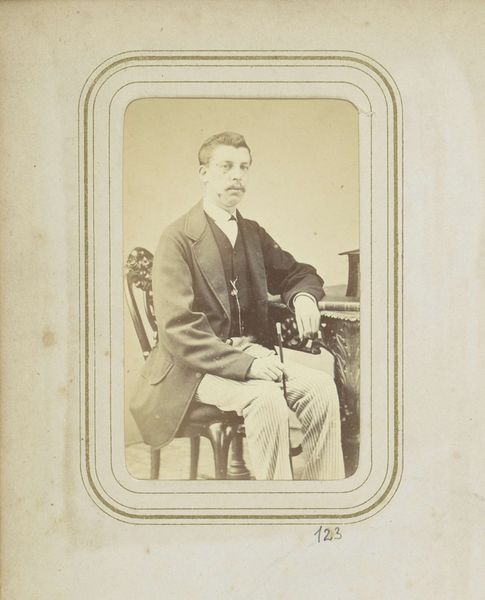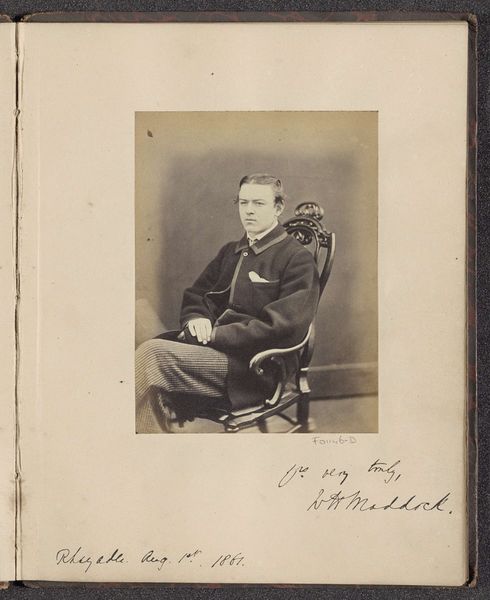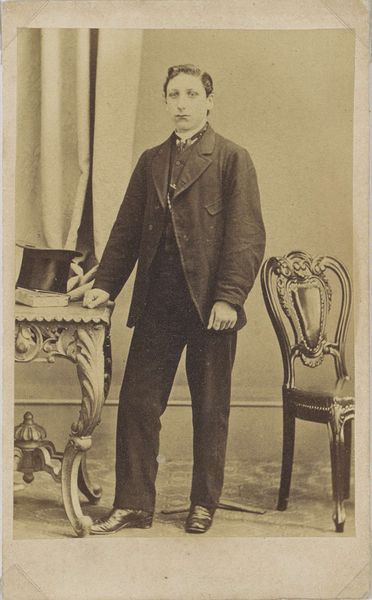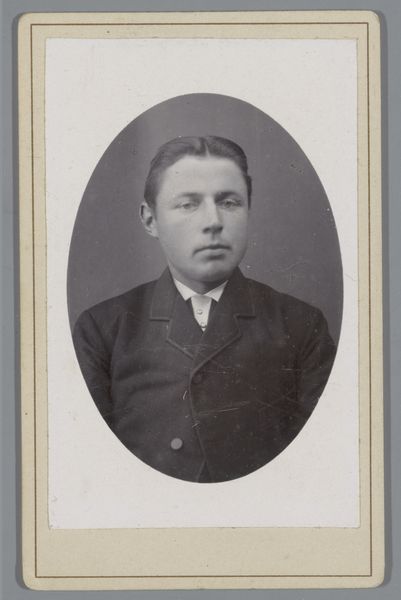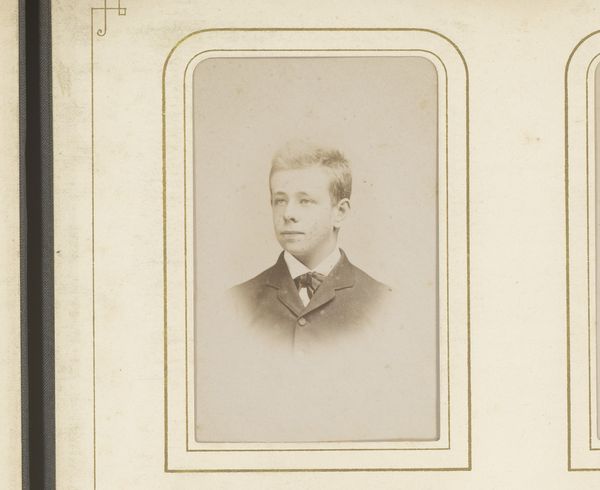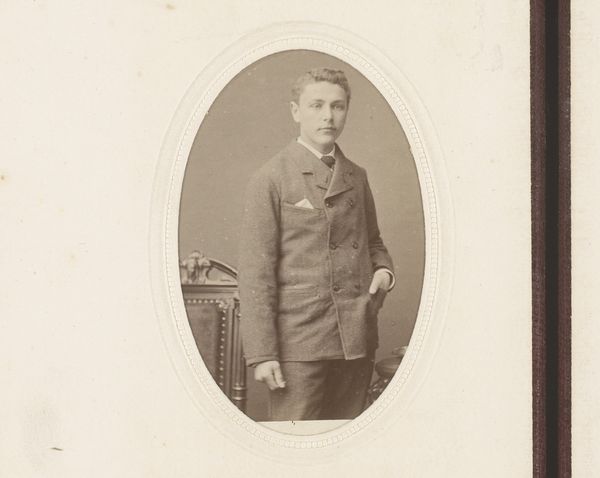
photography, gelatin-silver-print
#
portrait
#
photography
#
historical photography
#
gelatin-silver-print
#
19th century
#
realism
Dimensions: height 91 mm, width 55 mm, height 101 mm, width 62 mm
Copyright: Rijks Museum: Open Domain
This photograph of a seated man with a cane was created by Brainich & Leusink. The carte-de-visite, as these small images were called, depended on specific materials and processes, all of which affected its appearance. The image was likely produced using the albumen print method. Paper was coated with albumen derived from egg whites, then sensitized to light. The negative was placed in direct contact with the paper and exposed to sunlight. The resulting print displays a characteristic sepia tone. The surface has a subtle sheen and texture, directly related to the source materials. Cartes-de-visite were a product of mass culture and the industrial revolution. Photography studios like Brainich & Leusink offered affordable portraits, reflecting both the social rituals of representation and the economic structures of labor and consumption. As a multiple, a photograph could disseminate images widely, allowing individuals to circulate their likeness within society. The meaning of this photograph is not only in the image, but also in the materials and techniques of its production. Appreciating this making process encourages us to reconsider traditional boundaries between art, craft, and design.
Comments
No comments
Be the first to comment and join the conversation on the ultimate creative platform.


